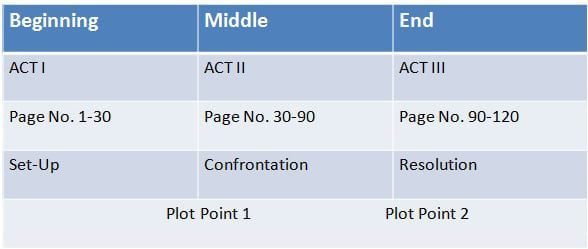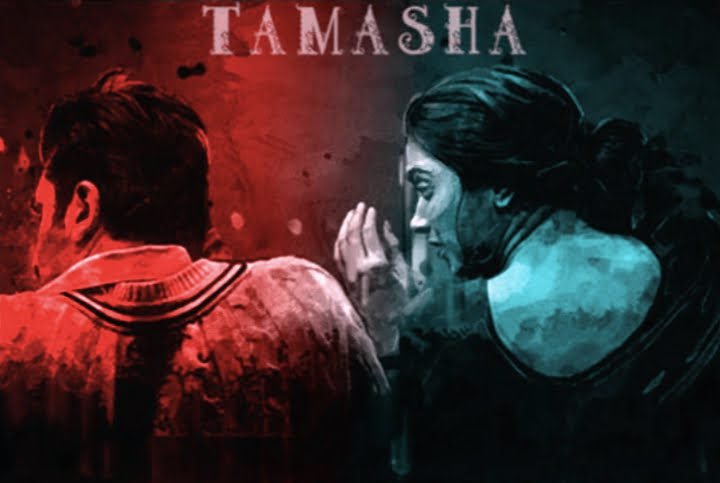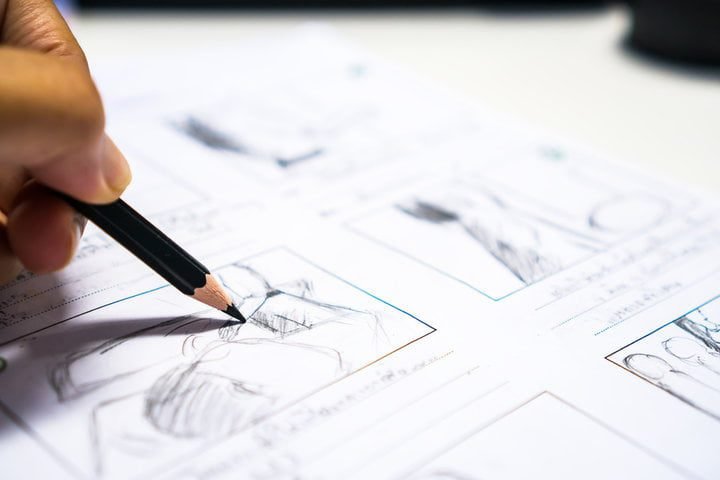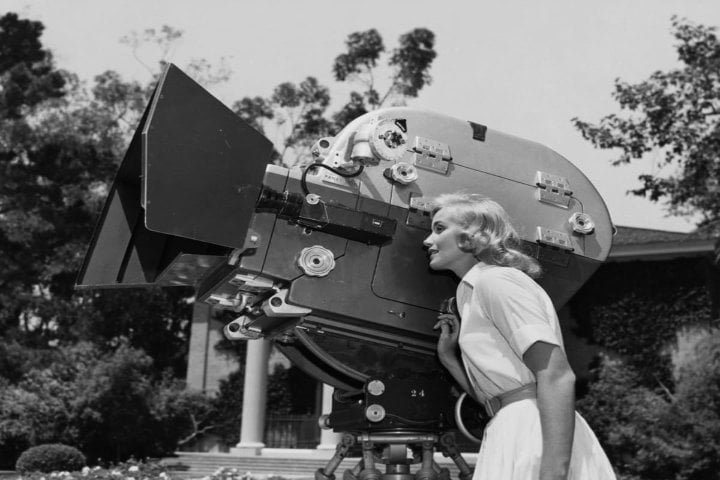The Screenplay Three Act Structure is a cornerstone of screenplay writing in Films. It is not a rigid formula but rather a flexible framework that adapts to evolving storytelling trends and audience expectations. As filmmakers continue to diversify their narratives, explore complex characters, and address relevant social issues, the art and craft of writing screenplay will continue to evolve, ensuring that the film industry remains a dynamic force in the world of storytelling.
In This Article
The Art & Craft of the Writing Screenplay
There are two parts of scriptwriting:
- Art – What we experience and what we feel gives birth to ideas. That nobody can teach. That is a lesson only life and the way an individual choose to live, can teach. Emotionality, sensibility, and the personal culture guides through this.
- Craft – It is the way one can present his art. This is something that needs to be learned with dedication and sincerity.
Screenplay and its Elements
The screenplay is a written text of a play, film, or broadcast. A few of the important elements of Screenplay writing are;
- Premise
- Story
- Character
- Scene
- Structure
- Dialogue
These all are separate elements, but it is impossible to talk about these elements in isolation when we talk about a screenplay. Everything will come alongside, and this is something which should be in this way only.
Defining Screenplay
The screenplay is a cinematic medium to tell a story. A story will give birth to a script, and a script will give birth to a film. Direction, camera, sound, acting, and editing, each of these elements are support systems for a script. Therefore, it is said that You can make a bad film with a good script, But you can’t make a good film with a bad script.
The script is dependent on a story. It is a story that makes the script happen.
What is a Story?
Storytelling is easily as old as humanity and is central to every society.
The stories are experiences of about every façade of life. Like in Romeo & Juliette, there is triumph of love over the loss of life, but in the case of Mahabharata, there was a loss of so many things behind a victory.
It is a medium to make others experience how I am experiencing life. Stories are a bridge between you and the world.
The need for stories is eternal to human nature, like other basic drives that include food, water, shelter, etc.
It is difficult to understand the human nature. Humans have the capacity and tendency to possess many emotions at a time. We may admire dearly a child’s smile while simultaneously being furious about a number of things. Since understanding human nature is difficult, therefore it becomes more difficult to understand life.
Therefore, Stories are the ways of making sense out of life. Life doesn’t make sense. Stories makes sense.
Stories are not life. It is not necessarily supposed to be realistic, but in that world of story, it makes sense. A person flying doesn’t make sense. But in the world of Spider-Man, a flying Spiderman makes sense.
After hearing every story, you realize that you have experienced something about life that you understood, which is in contrast to life that you don’t understand. Every story starts with your desire to explore certain experiences which you don’t understand.
Screenplay writing is the art of visual storytelling.
A screenplay is a story told with pictures, dialogue, and description and placed within the context of dramatic structure.
There are two aspects to writing a screenplay: One is the preparation required to write it: the research, thinking time, character work, and laying out of the structural dynamic. The other is the execution, the actual writing of it, laying out the visual images and capturing the dialogue.
To tell a story, first, we set up characters, then introduce the dramatic premise (what the story is about) and the dramatic situation (the circumstances surrounding the action), create obstacles for the characters to confront and overcome, and then resolve the story.
Screenplay Three Act Structure: Set-up, Confrontation, and Resolution
A screenplay is a story with a subject, which is usually about a person in a place doing his thing. The person is the main character, and doing his thing is the action.
These elements are expressed dramatically within a structure with a definite beginning, middle, and end, though not necessarily in that order.
In screenplay writing, roughly one page translates into one minute of screen time.

Act I is a unit of dramatic action that is held together with the dramatic context known as the Set-Up. Context is the space that holds the content.
Act I sets up the story, establishes character, tells what the story is about (the premise), describes the situation, and creates the relationships between the main character and the other characters.
In the first 10 minutes/pages, the screenplay writer establishes all this to continue the interest as well concentration of the audience in the movie.
Act II, held together with the dramatic context known as Confrontation. During this act, the main character encounters obstacle after obstacle that keeps him from getting what he needs, as defined in the screenplay.
All drama is conflict. Without conflict, you have no action; without action, you have no character; without character, you have no story; without a story, you have no screenplay.
Act III is held together with the dramatic context known as Resolution. Resolution does not mean ending; resolution means a solution that resolves the story. The ending is that specific scene, shot, or sequence that ends the script.
Act III is where the screenplay brings closure to the story. In the context of Bollywood, this act is about more than just tying up loose ends; it’s about delivering a satisfying solution to the audience’s emotional journey. In this context, ” Resolution ” refers to finding a solution to the story’s conflicts rather than merely ending it.
In contemporary Bollywood, the focus is on creating meaningful and thought-provoking resolutions. Audiences are looking for more than just a happy ending; they want resolutions that resonate with real-life complexities and provide a sense of fulfillment.
Plot Points

To get from set-up to confrontation and then to resolution, the screenplay writer creates a Plot Point at the end of both Act I and Act II.
A Plot Point is defined as any incident that hooks into the action and spins it around in another direction. A Plot Point is always a function of the main character. Plot Point I is the true beginning of the screenplay and swings the story around into Act II.
Plot Points serve an essential purpose of significant story progression in the screenplay keeping the storyline intact. Plot Points do not have to be big, dynamic scenes or sequences; they can be quiet scenes in which a decision is made. There could be many plot points in a screenplay.
Let’s discuss how the three-act structure of screenplay writing was used in director Imtiaz Ali’s 2015 movie “Tamasha” to grab the audience’s attention and set the stage for the unfolding drama.

Act I: The Set-Up
In the first act of “Tamasha,” director Imtiaz Ali effectively utilizes the three-act structure to establish the foundation of the story and captivate the audience’s attention:
- Character Introduction: Act I introduces the main character, Ved, played by Ranbir Kapoor. He is initially portrayed as a young boy fascinated by storytelling and the idea of “Tamasha” (drama). This introduction immediately connects the audience with the character’s childhood dreams and curiosity.
- Premise: The premise of the story is introduced through Ved’s childhood encounter with storytelling. This early fascination sets the tone for the exploration of identity and the conflict between conforming to societal expectations and pursuing one’s authentic self.
- Situation: The circumstances of Ved’s life in Delhi are showcased. He works in a monotonous corporate job, conforming to societal norms, and suppressing his true self. This situation creates the initial conflict within the character.
- Relationships: Act I establishes Ved’s relationships, including his interactions with Tara, played by Deepika Padukone, who is visiting Corsica. Their chance meeting sets the stage for the romantic subplot, adding complexity to the character dynamics.
- Audience Engagement: Imtiaz Ali engages the audience by juxtaposing Ved’s mundane corporate life with his exciting and adventurous persona in Corsica. This contrast piques the audience’s interest and keeps them invested in Ved’s journey.
Main Plot and Sub-Plots

- Main Plot: The main plot of “Tamasha” revolves around Ved’s internal conflict. He grapples with the societal pressure to conform to a routine life while yearning to embrace his true passion for storytelling and drama. This inner conflict is the driving force of the narrative.
- Sub-Plots: There are several subplots interwoven into the film:
- Romantic Subplot: The romantic relationship between Ved and Tara serves as a significant subplot. It showcases the emotional connection between the characters and how their individual journeys impact their relationship.
- Theater Subplot: Ved’s participation in a local theater group in Corsica becomes a subplot that ties into the main theme of embracing one’s true self. This subplot highlights his growth as a character.
Plot Points

- Plot Point I (End of Act I): The first major plot point occurs when Ved’s true, adventurous self is revealed to Tara. This moment leads to conflict as Tara discovers Ved’s inner turmoil, setting the stage for the confrontation in Act II.
- Plot Point II (End of Act II): The second plot point occurs when Ved confronts his past and realizes the need to reconcile his true self with his masked corporate identity. This revelation propels him towards his resolution in Act III.
- Resolution (End of Act III): The resolution of “Tamasha” does not follow a traditional “happily ever after” ending. Instead, it offers a solution to Ved’s internal conflict. He chooses to embrace his passion for storytelling, marking his personal growth and resolution of the story.
In conclusion, “Tamasha” effectively utilizes the three-act structure to engage the audience from the beginning. It introduces complex characters, establishes the premise and situation, and creates relationships that drive the narrative forward. The main plot revolves around Ved’s internal conflict, while subplots add depth to the storytelling. Plot points are strategically placed to redirect the narrative and lead to a meaningful resolution, emphasizing the importance of embracing one’s authentic self.
Evolving Trends in Bollywood Screenplay Writing
Bollywood screenplay writing is witnessing several intriguing trends within the framework of the three-act structure. Let’s evaluate “Tamasha” based on these prominent trends in screenplay writing.
Complex Characters
Bollywood has recognized the power of complex, multi-dimensional characters. The audience is increasingly drawn to protagonists who are not just black or white but exist in morally gray areas. This trend challenges writers to create characters that are relatable and emotionally resonant.
“Tamasha” excels in creating complex and multi-dimensional characters, particularly in the case of the protagonist, Ved, portrayed by Ranbir Kapoor. Ved’s character undergoes a significant transformation throughout the film, exploring themes of identity and societal expectations. His inner conflict and journey towards self-discovery make him a prime example of a complex character.
Diverse Narratives
The industry is embracing a more diverse range of narratives. Stories that explore different cultures, backgrounds, and perspectives are gaining traction. This inclusivity is not only reflective of changing societal norms but also provides fresh storytelling opportunities.
The film explores a diverse narrative by shifting between two distinct settings: Corsica and Delhi. The narrative structure effectively contrasts the freedom and authenticity found in Corsica with the conformity and routine of urban life in Delhi. This duality adds depth to the storytelling and showcases a diverse range of experiences.
Realistic Conflict
While melodrama is still an integral part of Bollywood, there’s a growing emphasis on realistic conflict. Screenplays explore issues such as mental health, societal inequalities, and personal struggles in a more authentic manner.
“Tamasha” delves into realistic conflicts, primarily focusing on the inner turmoil of the main character, Ved. His struggle to reconcile his true self with societal expectations and his pursuit of a more authentic life is a relatable and authentic conflict. This inner conflict drives the narrative and emotional depth of the film.
Strong Female Leads
Bollywood is increasingly shifting away from the stereotypical portrayal of women. Strong, independent, and empowered female characters are taking center stage, challenging traditional gender roles.
While the film primarily revolves around Ved’s character, Tara, played by Deepika Padukone, is a strong and independent character who challenges traditional gender roles. She is not just a love interest but plays an active role in Ved’s journey, showcasing her strength and agency.
Narrative Experimentation
Some filmmakers are pushing the boundaries of traditional storytelling. Non-linear narratives, unconventional plot structures, and unique visual storytelling techniques are gaining attention.
“Tamasha” is known for its narrative experimentation. Imtiaz Ali uses a non-linear narrative structure, blending the past and present, and incorporating elements of storytelling within storytelling. This unconventional approach adds depth and complexity to the film’s narrative, making it stand out.
Socially Relevant Themes
Bollywood is using its platform to address pressing social issues. Films tackle topics like environmental conservation, mental health awareness, and gender equality, sparking meaningful conversations.
The film touches upon socially relevant themes, particularly the idea of conformity versus individuality. It raises questions about societal expectations and the importance of pursuing one’s passions and authentic self. These themes resonate with a modern audience and encourage reflection on personal choices.
Global Collaborations
The industry is exploring collaborations with international talents, leading to a fusion of storytelling styles and global appeal. This trend is indicative of Bollywood’s ambition to reach a broader audience.
While “Tamasha” primarily features Indian actors and crew, its global setting in Corsica and the exploration of universal themes make it accessible to international audiences. The collaboration between Indian talent and a global backdrop adds a unique dimension to the film.





